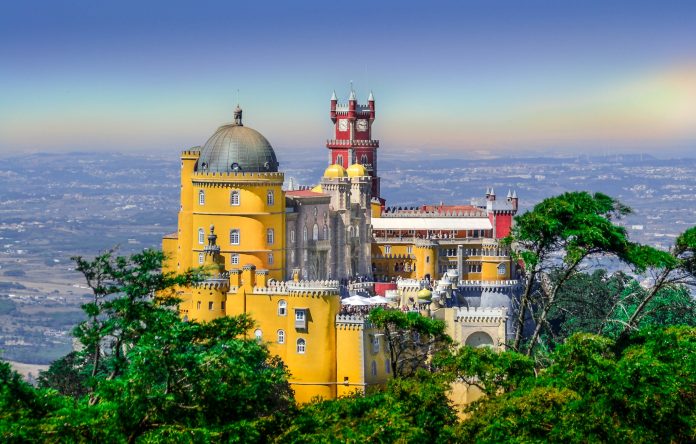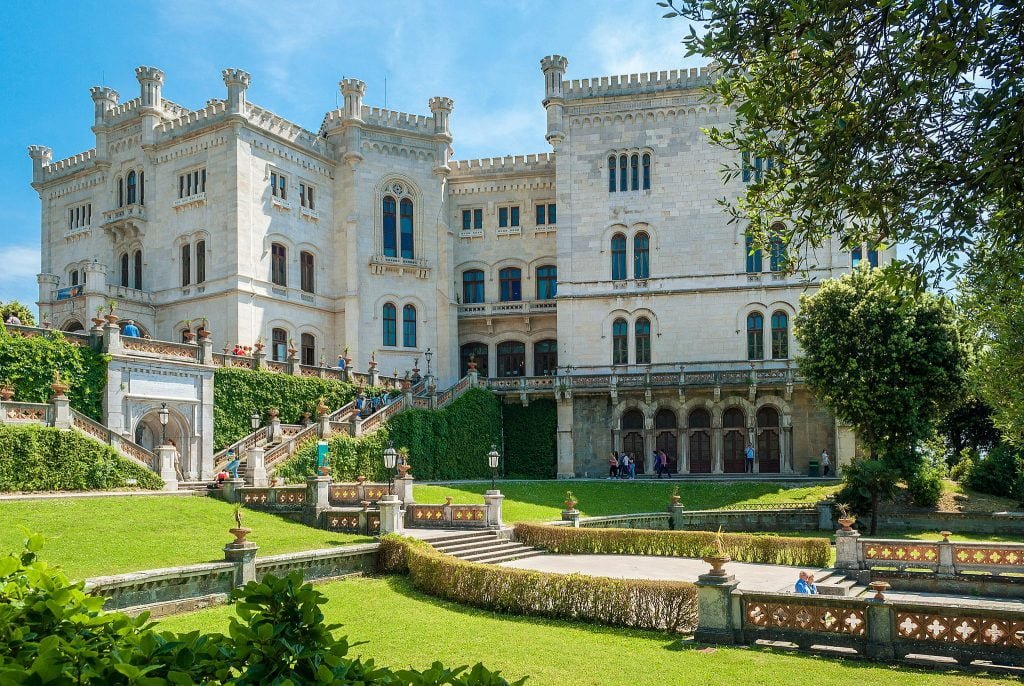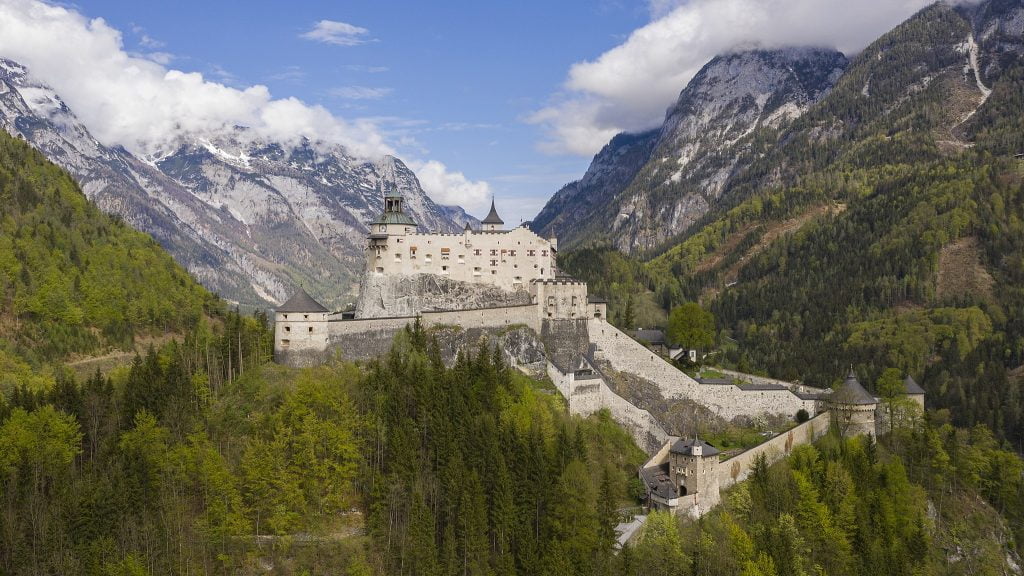Pena Palace is a gorgeous 19th-century palace built in the vein of Romanticism aesthetics. It is nestled within beautiful mountains and enjoys a bright yellow countenance that contrasts its surroundings like a sunset architectural jewel. Surrounded by a park that segues into beautiful hills, this castle attracts quite a number of tourists every year. Let’s take a look at its history and current condition:
Table of Contents
The bright colors and Islamic influences of the Pena Palace are contrasted with medieval European accents that mesh together beautifully.
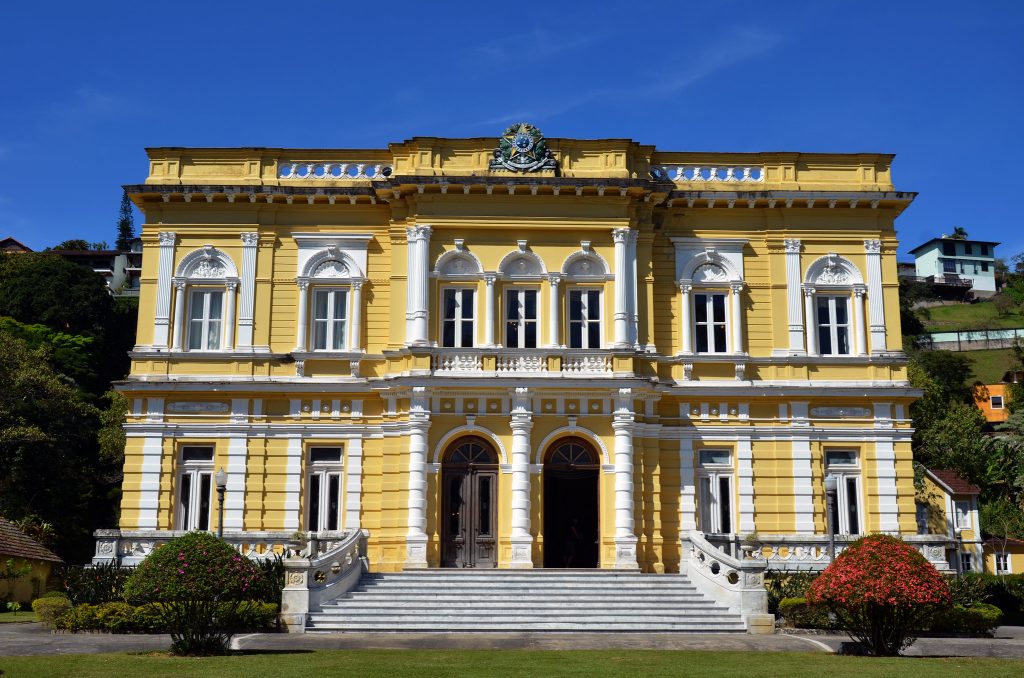
Frequently Asked Questions
Where is Pena Castle Located?
Huddled in the picturesque hilltops of the Sintra Mountains, Pena Palace is a marvel of a building in Portugal.
When was Pena Castle Built? Who Build It?
The location of Pena Palace was inhabited by a chapel in the 12th century, and then a monastery from the 15th century onwards. However, it wasn’t until Ferdinand II married Queen Maria II in 1836 that he fell in love with the Sintra Hills and built the current rendition of the Pena Palace there.
When is The Best Time to Visit the Castle?
Winter or spring is the best time to visit the castle so that you can explore at your leisure with fewer tourists and pleasant weather.
What Other Monuments are Located Nearby?
The Quinta da Regaleira (a massive estate) is a beautiful nearby location that you could visit in the town of Sintra.
FOR HISTORY | BEAUTIFUL IMAGES | INTERESTING FACTS | TRAVEL TIPS
Early History
Sacred Medieval Lands (12th Century)
The site where Pena Palace stands today used to be a 12th-century chapel. It was built in dedication to Our Lady Pena and was considered quite a sacred site. It was regularly visited by King John II and Queen Leonor. Even his successor, King Manuel I often visited it.
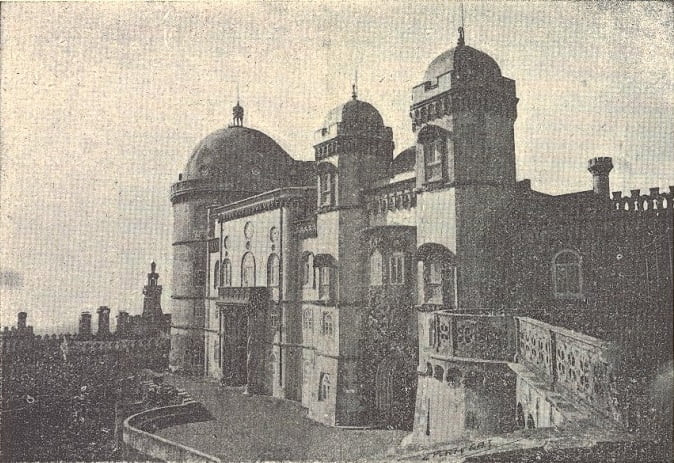
From “Our Lady Pena” to Royal Monastery (15-16th Century Onwards)
The site of Our Lady Pena was later inhabited by a Royal Monastery that is said to have been ordered by King Manuel I. It was given to the Hieronymite Order and remained under their care until the great earthquake of 1755. The natural disaster left the monastery buildings in ruins, but the institution was still operational until the abolishment of all religious orders (1834) in Portugal. To this day, the Grotto of the Monk remains intact in the Park of Pena – a recollection of the place that monks used to seclude themselves from the rest of the world.
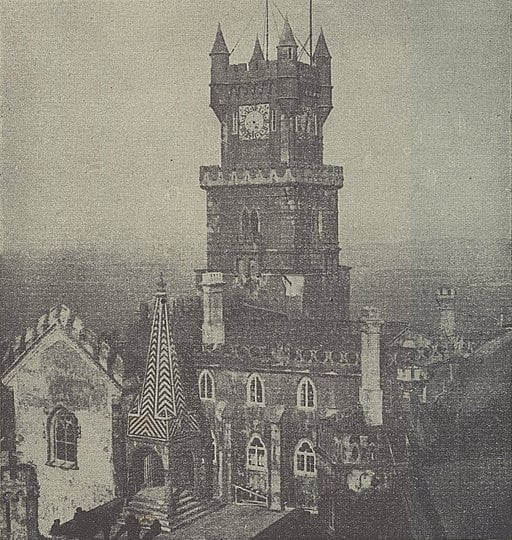
The Royal Summer Residence (1842-1854)
It was Ferdinand II that was besotted by the Sintra Hills and wanted to construct a royal summer residence there. He was married to Queen Maria II and was a cultured lad, a polyglot, and a person of flamboyant tastes. He purchased the land of the Monastery and its surroundings with his own fortune and set about building what we know as Pena Palace today.
Although he had originally just intended for this new building to be a summer residence, his attraction to the surroundings led him to morph the project into a full palace. He had the original construction utilized under the supervision of Baron Wilhelm Ludvig von Eschwege (a mining engineer and mineralogist).
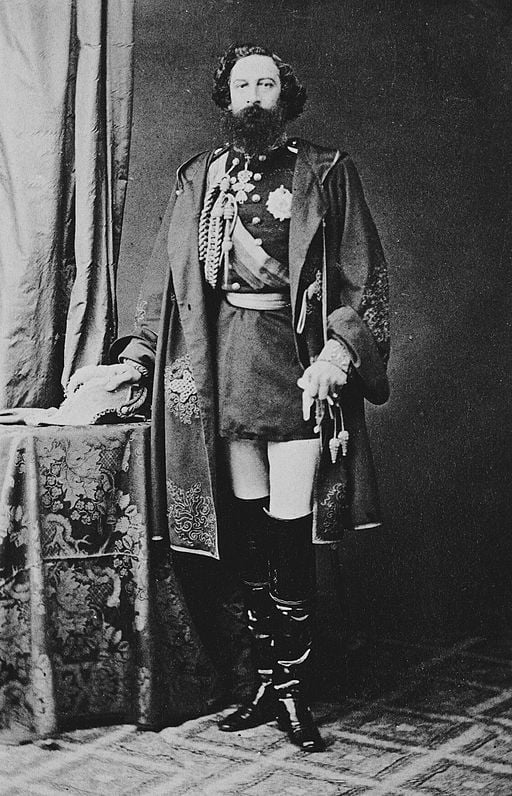
This extension of the architecture was accompanied by various other features that derived their inspiration from medieval imagery. These included the towers, a drawbridge, parapet paths, and even an access tunnel. The facade boasts Moorish and Manueline accents and the overall articulation is simply gorgeous.
Under King Carlos
After King Ferdinand II, it was Carlos I and his wife Queen Amelie who assumed residence at the Palace of Pene. However, they only used it for a partial summer before relocating to the Citadel of Cascais. It was also inhabited by their son, Prince Manuel II, who revamps his father’s chambers to attend official functions.
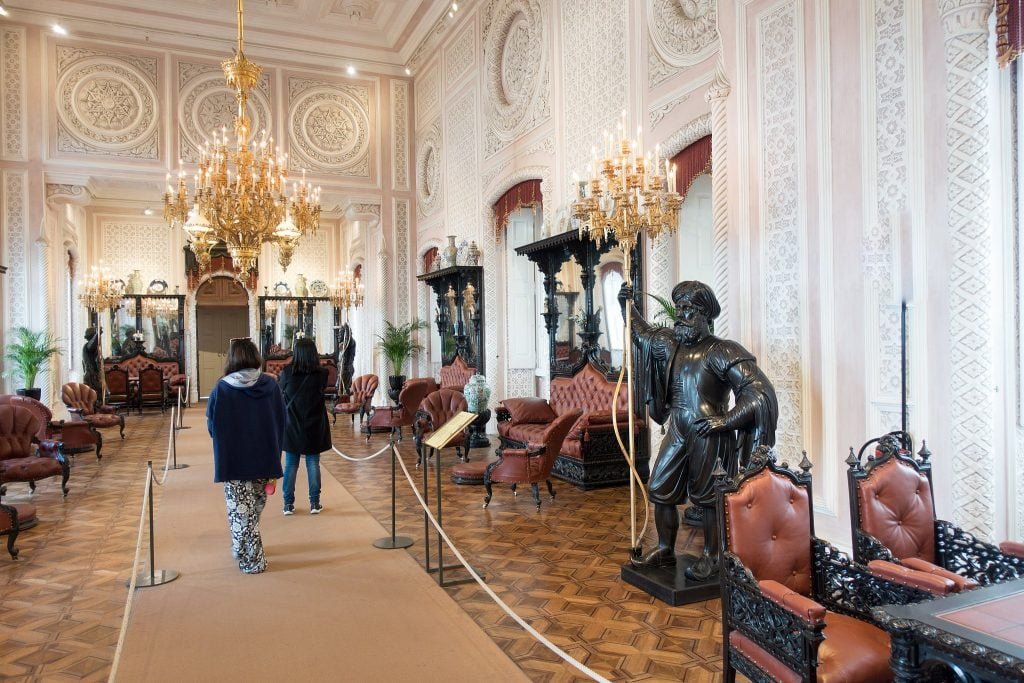
Revisit More Historic Places Below or Read Further
Current Times
In 1910, Pena Palace was certified as a National Monument. Queen Amelie heard the news of the Declaration of the Republic while she was at the palace and the entire royal family fled the country in the wake of the revolution. After that, the castle wasn’t maintained and fell into a state of disrepair, only to be assailed with refurbishment efforts in the latter half of the 20th century.
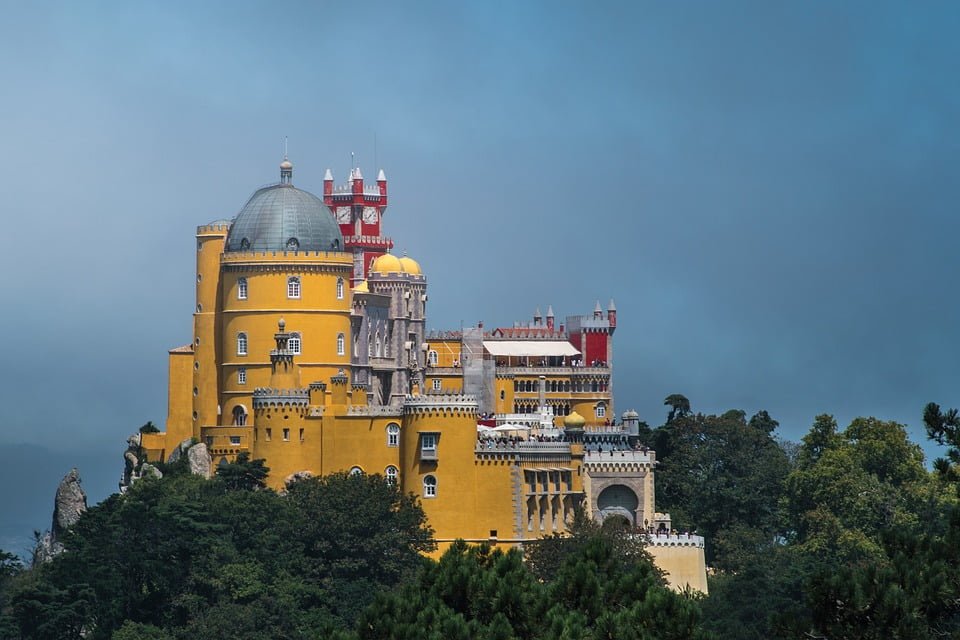
Today, this building is an important and culturally rich site in the Portugal architectural landscape. It’s also been classified as a World Heritage site by UNESCO (1995) and has been run by the Parques de Sintra since the year 2000.
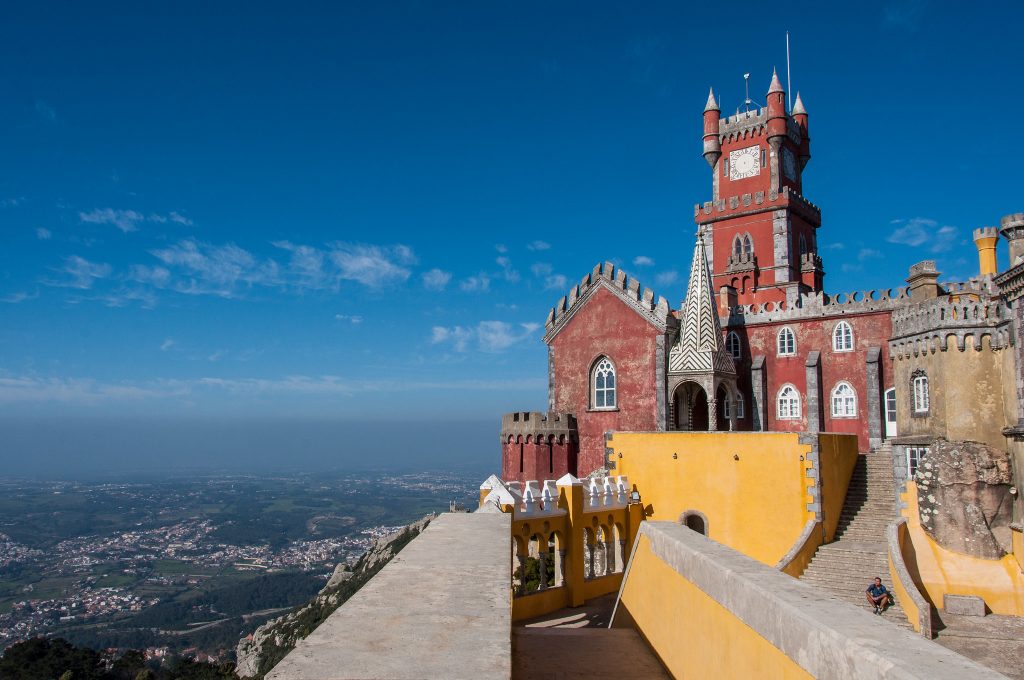
The palace is constantly being conserved and restored within the framework provided by UNESCO and is regularly visited by hordes of tourists every year.
Interesting Pena Castle Facts
- Ferdinand II had the original construction of the Monastery painted in red, while the extension was painted in yellow.
- The bright colors and Islamic influences of the Pena Palace are contrasted with medieval European accents that mesh together beautifully.
- While the yellow minarets and rich parapets of the palace are readily visible from the Sintra town, there’s also a dedicated “purple wing” that you can explore inside.
- The park of the Pena Palace was designed by Ferdinand to be quite exploratory. Its interestingly architected twisting pathways lead to various landmarks all over the 85 hectares (210 acres) of the park (i.e. to the Valley of Lakes, Grotto of the Monk, Queen’s Fern Valley, etc.).
- Ferdinand II was an avid collector and the unique plant species in Pena Palace’s park are a testament to his hobby. With tree species that were specially curated from each continent, the arboretum of this park is one of the most impressive ones in Portugal.
- Ferdinand II’s second wife was the Countess of Edla, after whom he built the Chalet of the Countess of Edla in the park. It was a double-story building that complemented the urban fabric of its surroundings quite soundly.
- There are quite a number of fascinating interior details at the Pena Palace. These include the 14 monk cells that were revamped with vaulted ceilings to make royal bedrooms, the stained glass window inside the chapel that features Vasco da Gama kneeling before the king, the Telephone room, the Indian room, and the Arab room.
Visiting Pena Castle – Tips and Tricks
As one of the most prime tourist destinations in the Iberian Peninsula, Pena Palace brims with unchecked charisma, uniqueness, and classic appeal. You should definitely plan a visit if you’re in Portugal. Here’s some information that will make things smoother for you:
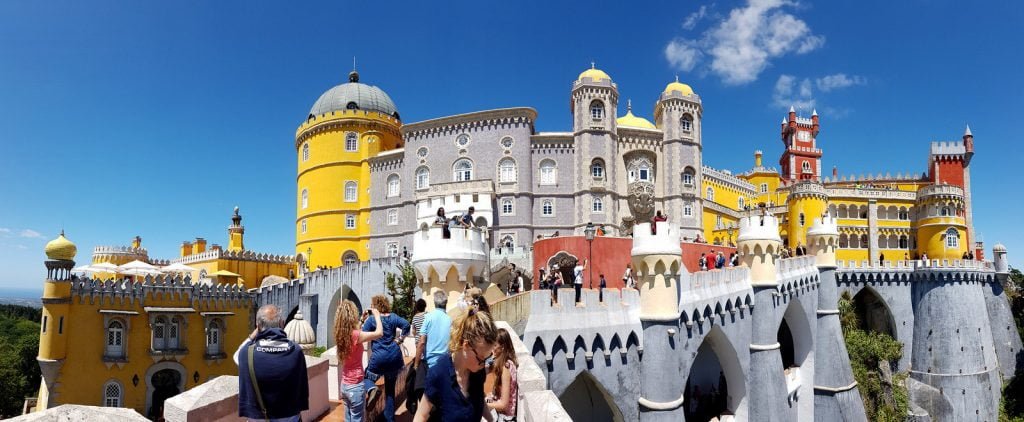
How to get to Pena Castle?
It’s quite easy to get to the Pena National Palace from Lisbon. The Line 35 bus can get you to your destination in an hour at €1-€11 ($1-$12 USD). Alternatively, you can also take the Line 18801 train for€1.7-€3.4 ($2-$4 USD). A 30-minute taxi drive can get you there at a cost of €52-€69 ($60-$80 USD). You can also make the 20-mile ride in your own car at a fuel cost of €3.4-€6 ($4-$7 USD).
Ticket Prices, Visiting Hours & Travel Tips
Information was checked & updated on October 22, 2023.
Pena Palace is open all year round (except Christmas and New Year). Visiting hours for summer (March 25th to October 27th) are between 9:00 am to 6:00 pm. The last entry is allowed at 5:30pm.
During winters (October 29th to March 24th), the castle and the park can be visited between 10:00 am to 6:00 pm.
As for the tickets, you can explore both the park and the palace itself for a price of €14 ($15 USD) for adults, €12.50 ($14 USD) for a kid, and €49 ($57 USD) for a family. If you just want to visit the park, then you can buy an adult ticket for €7.5 ($9 USD), a child ticket for €6.5 ($8 USD), and a family ticket for €26 ($31 USD).
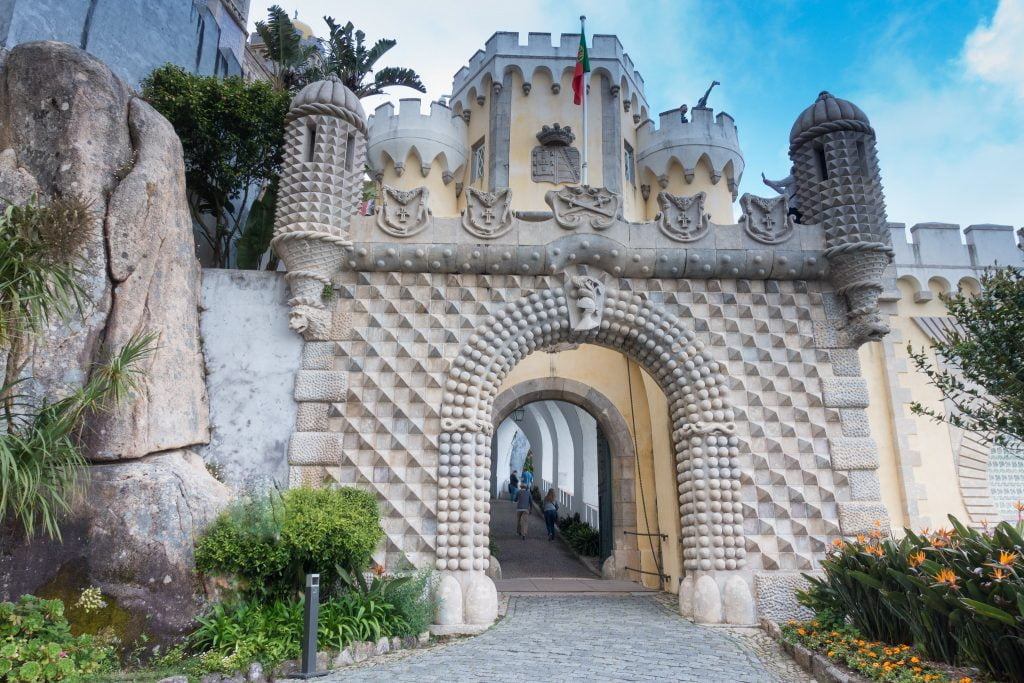
How Long Will It Take to Tour Around?
It takes almost an hour to visit the whole castle; you could add in some extra time (2-3 hours) for exploring the park as well.
Up to Date Information
For up to date ticket prices and visiting hours visit the official website: https://www.penapalacetickets.com/
Some words of advice and tips:
- It’s best to visit the Pena Palace early because it gets really busy during peak visiting hours.
- Food options at the palace are limited (and quite costly!) so it’s best to have lunch in town.
- The uphill ascent to the castle can take 50 minutes if you’re climbing the steep incline on foot. It’s best to take the 434 Tourist Bus for €7 ($9 USD).
- There’s a strict no-photos-allowed policy at the castle that you must respect!
- The castle requires you to pre-book your tickets online before visiting.
Do you want to see more unique and interesting castles to visit? Read our list of the best castles in Portugal.

